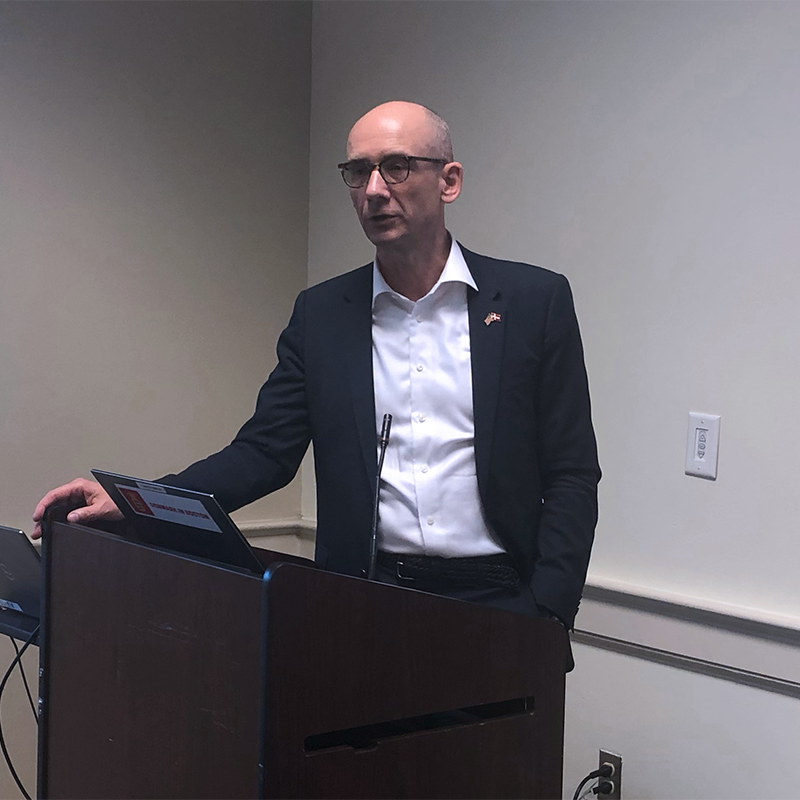News Story
New UM Study Finds Levee And Flood Insurance Standards Inadequate
U.S. Flood Standards Inadequately Protect Against Flood Risk
New Study Says Millions Exposed to Flooding Are Not Insured
COLLEGE PARK, MD. - A newly released report from the Water Policy Collaborative at the University of Maryland says that the use of the 100-year flood standard leaves millions of people who face a significant risk of flooding uninsured and under-protected. The report, prepared for the Federal Emergency Management Agency (FEMA), recommends that levees protecting urban areas should be built with a higher level of protection than the 100-year standard that is now being used to rebuild the levees in New Orleans.
“This terribly important study calls for many at the federal, state and local levels to change how they evaluate and manage flood risk,” says study directorGerald Galloway, a professor of civil and environmental engineering at the University of Maryland. “For example, in New Orleans they are rebuilding the levees based on a 100-year flood standard, but these levees should eventually be raised to at least a 500-year flood standard,” says Galloway, Glenn L. Martin Institute Professor of Engineering, in Maryland’s A. James Clark School of Engineering.
The report also highlights the critical need for better risk communication, says study co-director Gregory Baecher, also a professor in the department of civil and environmental engineering at Maryland. “Communicating risk to those who are behind levees or in the flood plain is crucial and our officials are not doing a very good job of this.”
Please click here for the complete report
Study findings:
The 100-year national flood standard, as currently applied, is inadequate and as a result is not contributing effectively to accomplishment of National Flood Insurance Program (NFIP) goals to decrease the risk of flood losses and the demands and expectations for Federal disaster assistance after floods. In many cases the 100-year standard is inadequate, and this standard is not even being applied adequately to the regulation of land use and development in flood plains. Given the variation in flood risk created by topographic, ecologic, meteorological, and land use differences across the country, state or local moves to raise the standard would seem logical and should be put into place, where needed by the local governments.
For insurance purposes, the 100-year standard is too low to properly address the Nation’s significant flood risk. For homes within the 100-year flood plan, there is a 26 percent chance of at least one (and possibly more) “100-year flood” during the 30-year mortgage. For homes outside of the 100-year floodplain but within the 500-year floodplain there is still a 6 percent chance of at least one “500-year flood”. Recent estimates for FEMA indicate that there are 3.5 million to 7 million structures in the area outside of the 100 year but within the 500-year floodplain.
-
The 100-year national standard is too low a standard for levees protecting population centers. The 100-yeart standard does not adequately take into account the residual risk behind levees. Levees in non urban areas should protect against the 100-year or larger flood, depending on the economic costs and benefits of the levee As illustrated by Hurricane Katrina’s impact on New Orleans, the consequences of levee overtopping or levee failure can be catastrophic. The residual risk that exists for those who are protected by levees creates a major challenge. Numerous studies and reviews conducted over the past 30 years have recommended that levees protecting urbanized areas be built to a protection level higher than the 100-year standard and that those living behind such levees should be required to obtain flood .
-
FEMA is not effectively pursuing the NFIP goal of supporting the protection of natural and beneficial functions of floodplains. The 100-year floodplain identifies areas containing much of the Nation’s important riverine habitat and the ecosystems that depend on that habitat. NFIP influence of the that land provides strong support to restoring and preserving the natural and beneficial values of floodplains
Study Recommendations:
-
FEMA should take action to improve the implementation of the 100-year standard for regulation of land use. In addition states and their communities should exercise their responsibility to impose higher standards, where the health and safety of the population merits a higher standard for land use regulation.
-
FEMA should seek legislative authority to require mandatory purchase of flood insurance by those living in the 500-year floodplain and those living behind levees to address the risks they face and to ensure they are aware of these risks.
-
FEMA should NOT recognize levees under the NFIP unless they provide protection to 500-year flood level.
-
FEMA should ensure that consideration of natural and beneficial functions is fully integrated into all aspects of FEMA and NFIP actions influencing floodplain
This study was conducted by members of the Water Policy Collaborative (WPC) at the University of Maryland in coordination with representatives of AMEC Earth and Environmental Services, HDR Inc., Michael Baker Corporation, and Watershed Concepts. The Water Policy Collaborative is a gathering of scholars and practitioners brought together virtually to address national and international water resources policy challenges and to support other activities to improve the quality of decision making on critical water resource issues. Its membership includes a wide variety of disciplines and individuals located at organizations across the United States. It is hosted and sponsored by the A. James Clark School of Engineering, the School of Public Policy and the College of Behavioral and Social Sciences, University of Maryland.
Published May 1, 2007









